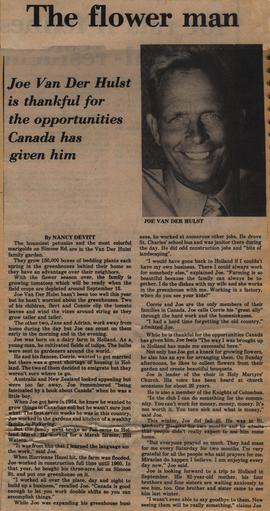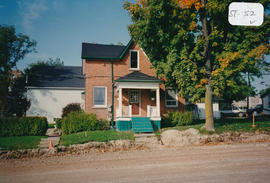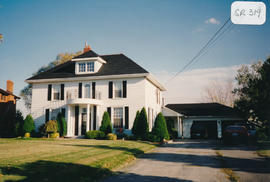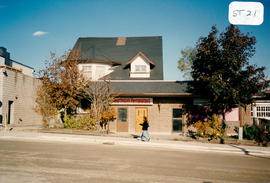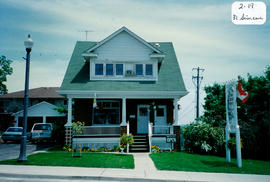The mid-block building located at 61 Simcoe Road was built around 1850-1880 in the Classic Revival style. Emerson Glover and his wife and children (Betty, Wilma, Joe and Mary) moved to this house from Coulson’s Hill. He had Len Saint build a cement garage for the trucks he used in his general trucking business. There was a large garden at the back. Andy Simurda (a gardener) bought the house when the Glovers moved to Toronto. He also used the garage for his trucks and for vegetable storage. The garage was eventually demolished. In 1925, Billie Ward, his wife Evelyn, and children (Gwen and Connie) lived here. He worked for Spence Lumber Co. and was a master machinist as well as a clock maker. This structure later became the home of Gwen (Ward) Kilkenny for many years.
The 1½-storey, two-bay house has a rectangular, simplified, ‘temple’ plan with an off-centre entrance and a medium-pitched, gable roof. The pediment roof shape is facing the front and there is a central chimney. A hip roof on the grade-level, entrance-porch verandah is supported on wood half-posts on a solid, wood railing. The roof supports are not original. A door set into a plain, rectangular opening is also not original. There are small window openings with low floor to ceiling heights. A single, ground-floor window and the smaller, upper-floor windows are set into plain, rectangular openings. They are not original. The small, upper-floor windows are offset from the ground-floor openings. The house has 4” poured-in-place, concrete construction with vertical, metal siding. It was originally clad in stucco. According to the 2000 inventory, there are no original details remaining other than the building’s form. (1, 2, 3)

